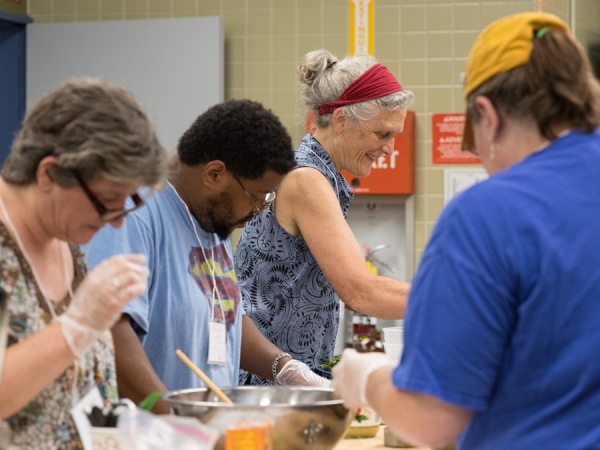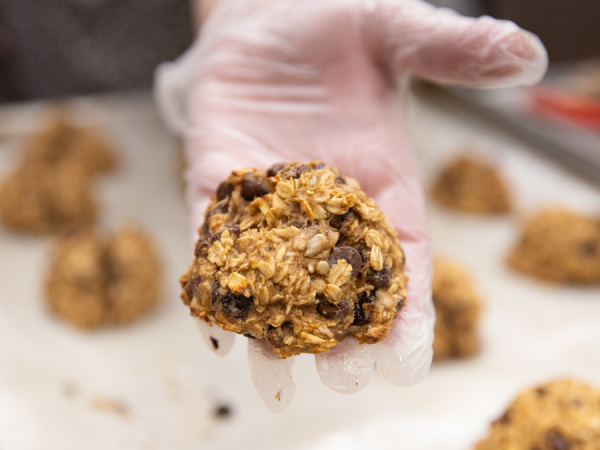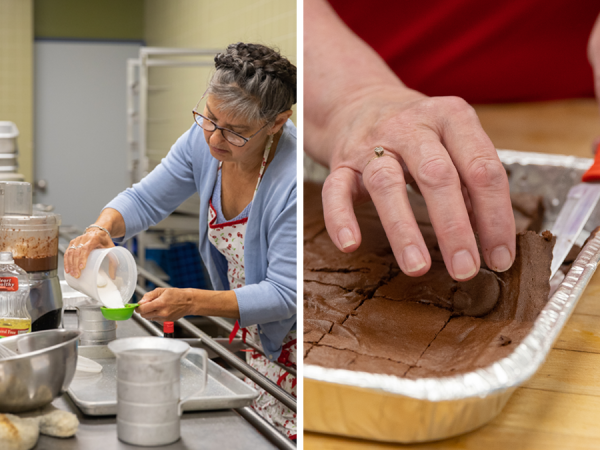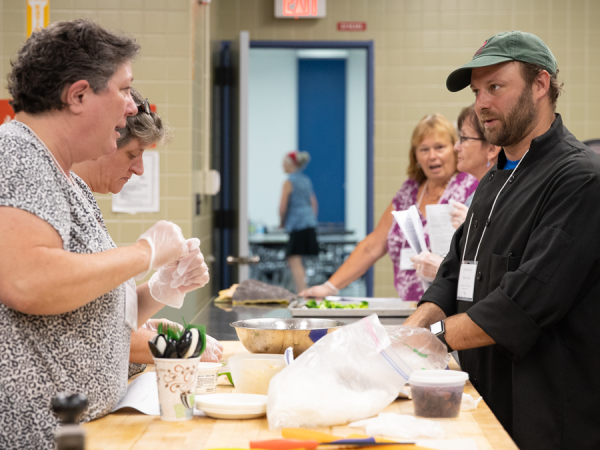So exciting to see our Lamoille North food service staff digging in deep to learning new farm fresh recipes and techniques!
Nutrition, Taste, and Cost: Balancing Priorities in the School Cafeteria
There’s typically one day each week that someone in your family sits down, pen and recipes nearby, to plan out the upcoming meals and requisite grocery list. For some of us, it’s an energizing time to flip through dog-eared cookbooks, carefully craft a list, and leaf through supermarket flyers. For others, it’s a chaotic jumble of family preferences, allergies, and stale recipes that will devolve by Tuesday. Whether joy or chore, meal planning for nutrition, taste, and accommodations is no easy feat.
Now imagine you’re planning, shopping, and cooking for 300 opinionated eaters, under the scrutiny of federal standards, for about $1.25 per plate. This is the daily work of school nutrition professionals creating meals for students.
It’s mind-boggling to consider the amount of foresight, organization, and skill that’s required to run a successful school meal program. The five-day Child Nutrition Programs Summer Institute offers the Vermont school food community some support for this enormous job. Vermont FEED Program Director Abbie Nelson has been teaching at this Institute for over ten years, working to build local foods into the existing school food systems. She and Shelburne Farms Executive Chef Jim McCarthy co-led one of the 2018 workshops to consider nutrient density and food costs in school meals.
About twenty school food professionals gathered in the Milton High School cafeteria for the class. Their questions weren’t that different from what we all consider when feeding ourselves and our own families, but these folks are executing their plans on significantly bigger — and stricter — scale. How can we pack more nutrition into the food we serve? How can these efforts fit into our food budget? What recipes are good to use and build upon?
One concept they explored was the practice of swapping out oils and fats in recipes with fruit, vegetable, or bean purées. Would the food still taste good? What would the cost difference be? Typically, a purée can be substituted for half of the fat called for in an original recipe. “The benefit of adding purées is that they act to keep a baked good moist while also adding fiber and vitamins and reducing calories,” Chef Jim explains. But, the different ingredients can make the final result taste different. “Using lower fat milk products won’t affect the flavor much, but they also won’t do much to increase the nutrient content of a baked good,” he adds. Some vegetable purées are more likely to change the taste of the final product, but that isn’t always a negative. “Chocolate actually goes very well with pumpkin,” adds Chef Jim.
Fruit purées (think apples, bananas, and peaches) are good for cakes, muffins, and cookies. He uses a banana purée in the Banana-Oat Breakfast Rounds, which are a yearly favorite at Vermont FEED’s Northeast Farm to School Institute, too. Bean purées (chickpea, black bean, and kidney, and white bean purées are all options) are best reserved for denser items like his Black Bean Brownie recipe. Another tip from Chef Jim: “Use bean purées as thickeners in soups and sauces rather than cornstarch and flour. They can also be used to make creamy dressings - chickpea purée with lemon, herbs, and garlic is a great dressing for salads.”
With recipe experimentation, using purées can increase the nutrient density of foods without changing the taste too drastically, which is important when feeding children. It’s been reported that a child needs to taste a new food ten times or more before they’re willing to eat it without protest. By keeping the taste as similar as possible to a recipe kids have eaten previously, kids are more likely to eat the healthier version.
There are additional upsides to using purées in a school cafeteria: cutting calories is one. Federal standards restrict how many calories can be in school meals over the course of a week. By cutting back on oils and fats in some recipes, there’s more flexibility throughout the week to include items like meats and cheeses, which can be locally sourced and tend to be popular (and nutritional) items in the lunch line, but which are also calorie-dense.
Additionally, vegetable, fruit, and bean purées often prove less expensive than butter and some fats, aiding in keeping meals within budget. Swapping fats for purées helps to mitigating food waste, too, which also influences the bottom line. Having another way to use those bruised apples and mushy bananas means less money ending up in the compost pile. Schools typically start with anywhere between $2.50 and $3.50 to spend on a meal. After overhead, staffing, and the mandatory 8oz. of milk, school nutrition staff are apt to be left with less than a dollar to spend on the rest of the plate. Small savings can make a big difference over the course of a school year and add to the budget for buying more local products.
School nutrition teams have a complex, highly regulated task to execute every day: serve a school full of children nourishing food they’ll actually eat. With opportunities to network and share what is working and what isn’t across schools, programs like Vermont FEED are working to make knowledge more accessible, make connections between districts, and make the work of the cafeteria more visible in their community. Next time the school-age kid in your life talks about their lunch tray, consider the balance of priorities and thoughtfulness it takes to make that happen — and all the work that still needs to happen in our food system to make nutritious, local school food accessible to all children.
Vermont FEED is a partnership Farm to School project of the Northeast Organic Farming Association and Shelburne Farms.
Comments
The Food Revolution occurring around the Nation is actually not about newest celebrity Chefs and 3 Michelin Star Restaurants and exotic Food Shows on the major Cable Networks, the revolution is really happening with community inspired educational projects such as "Farm to School". So proud to know that Shelburne Farms is one of its major catalysts here in Vermont and participates in Food Sustainability and Education programs around the Nation and the World.
Thank you!
Sincerely,
Jacques-Paul Marton




